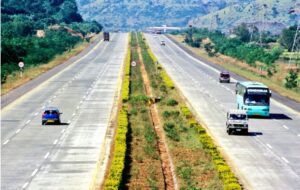India’s Chandrayaan-3 mission has made a groundbreaking discovery, uncovering remnants of an ancient magma ocean on the Moon’s south pole. This finding supports the Lunar Magma Ocean theory, which suggests that the Moon’s surface was once formed by molten rock approximately 4.5 billion years ago. The mission, which landed on the Moon last August, marked the first time any craft had explored this isolated and enigmatic region.

Supporting the Lunar Magma Ocean Theory
The Lunar Magma Ocean theory posits that after the Moon’s formation, it began to cool, leading to the rise of a lighter mineral known as ferroan anorthosite. This mineral, composed of molten rock, is believed to have floated to the Moon’s surface, solidifying and forming its crust. The Chandrayaan-3 mission found evidence of this ferroan anorthosite in the south pole, bolstering the theory of the Moon’s early evolution. Dr. Santosh Vadawale from the Physical Research Laboratory, a co-author of the research published in Nature, emphasized that these observations make the theory much more robust. Prior to this mission, evidence of magma oceans had primarily been found in the Moon’s mid-latitudes during the Apollo program.
Exploring the Lunar South Pole
The Chandrayaan-3 mission was a historic achievement for India’s space agency, ISRO. The mission’s rover, Pragyaan, explored the lunar south pole for 10 days, collecting valuable data and making crucial observations. Prof. Vadawale, who was part of the mission control team, described the experience as “really exciting” and “a once-in-a-lifetime experience.” The rover was tasked with navigating the challenging terrain of the Moon’s surface, where it took 23 measurements using an alpha particle X-ray spectrometer. This instrument excites atoms and analyzes the resulting energy to identify the minerals present in the Moon’s soil.
Discovery of a Massive Meteorite Impact
In addition to uncovering the remnants of the magma ocean, the Chandrayaan-3 team also found evidence of a massive meteorite impact that occurred four billion years ago. This impact is believed to have created the South Pole–Aitken basin, one of the largest craters in the solar system, measuring 2,500 km across. Although the basin is about 350 km from the site explored by the Pragyaan rover, the scientists detected magnesium on the surface, which they believe was ejected from deep within the Moon by the impact. Professor Anil Bhardwaj, director of the Physical Research Laboratory, explained that the impact likely excavated material from the deeper parts of the Moon.
Future Missions and the Quest for Ice Water
The Chandrayaan-3 mission is part of India’s ongoing efforts to explore the Moon and unlock its secrets. The mission’s findings are just a fraction of the scientific data collected, and ISRO has even more ambitious plans for the future. India is preparing to launch another mission to the Moon in 2025 or 2026, with the goal of collecting and bringing back samples from the lunar surface for further analysis. One of the mission’s key objectives is to discover ice water on the Moon’s south pole, a discovery that could be a game-changer for space agencies’ aspirations to establish a human base on the Moon.














